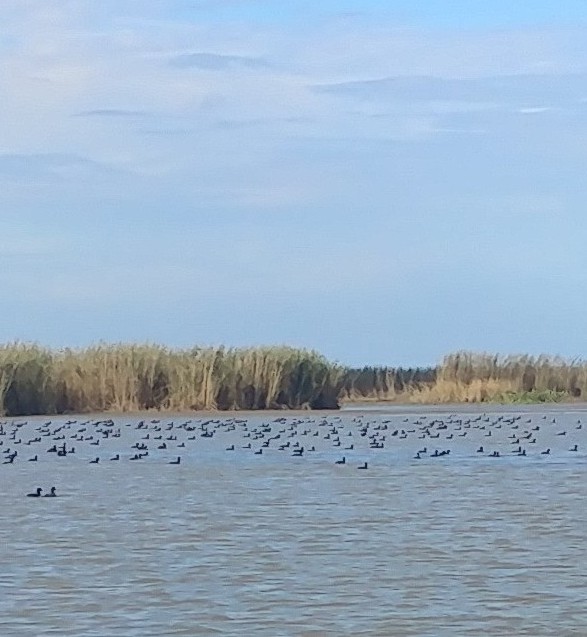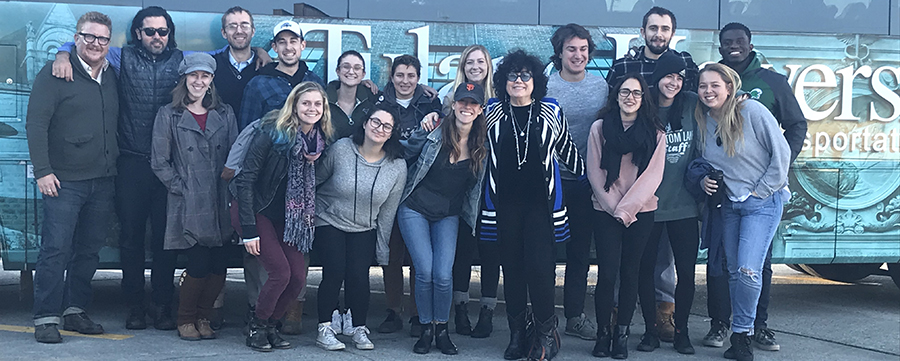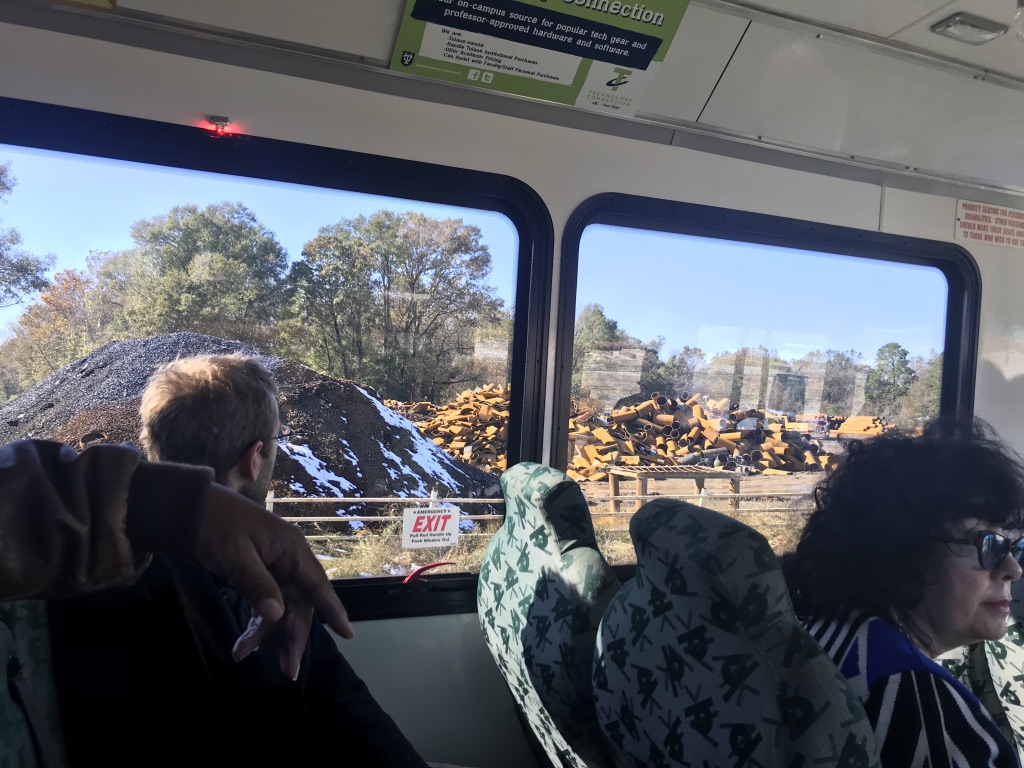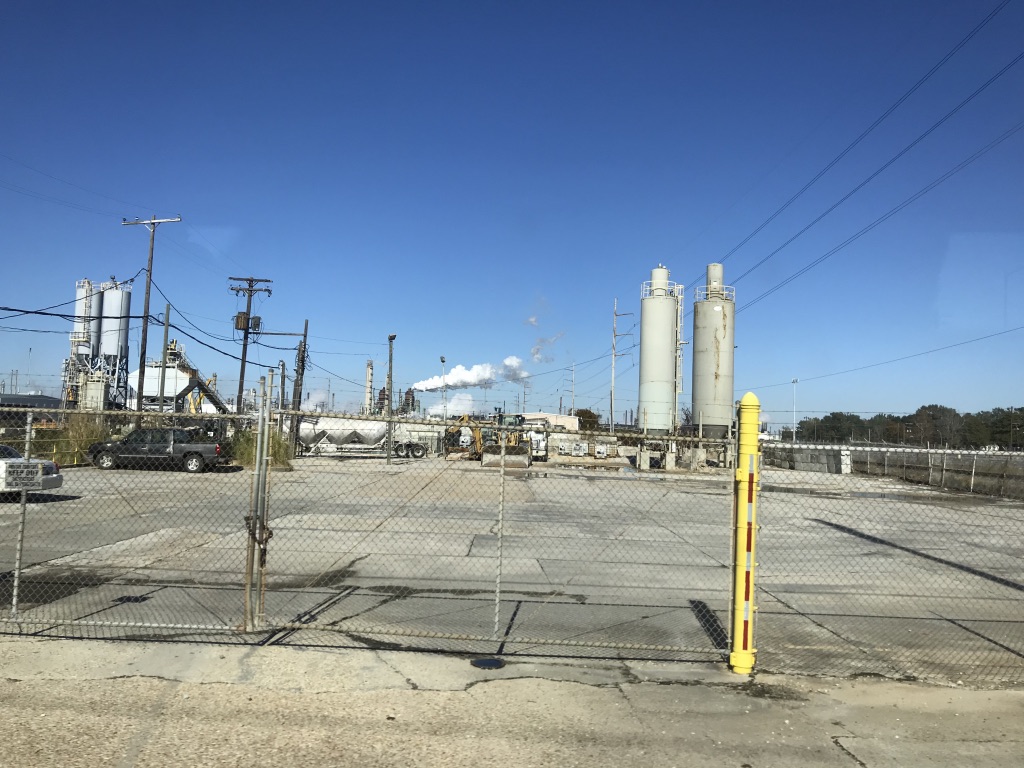2/8/2018
By Christopher Oliver, Professor of Practice, Department of Sociology and Environmental Studies and Eric Nost, Visiting Instructor, Environmental Studies
On December 4th, 10 students from the Environmental Studies courses entitled Comparative Agriculture (Professor Nost) and Urban Political Ecology (Professor Oliver) traveled to Buras, LA for a coastal land loss and restoration field trip. Over the course of three and a half hours, our guide Captain Ryan Lambert took us out on two boats to teach us about the causes of wetlands loss, its impacts on fishers, possibilities for restoring marshes, and some of the controversies surrounding restoration. The highlight was Captain Ryan showing us a site where he has harnessed a crevasse in the Mississippi River to divert sediment flows to build new land - some of the newest land in the entire world, in fact. He shared with us how important these marshes in Breton Sound were for protecting upriver places like New Orleans from storm surges. Captain Ryan shared his view that while shrimpers and other fishers may be adversely affected by the sediment diversions the state government wants to build, these diversions are still necessary. As a result of this trip, Comparative Agriculture students gained insight into fisheries management issues while Urban Political Ecology students developed a better appreciation for the connections between cities' rural surrounds and the cities themselves.


On December 9th, 16 students from the Environmental Studies course entitled Urban Political Ecology (Professor Oliver) traveled to Baton Rouge, LA to meet at the offices of the Louisiana Environmental Action Network (LEAN) as part of an arranged tour of Baton Rouge and its surroundings. The full day trip involved visits with community members in neighborhoods negatively impacted by petrochemical industrial facilities (including Baton Rouge ExxonMobil facility, one of the largest refineries in North America), many of whom have experienced disproportionately high rates of illnesses and cancers. One such neighborhood, originally built to house workers from the ExxonMobil facility, became a predominantly Black, working-class community. Next, the group traveled north of Baton Rouge to one of the city’s municipal water treatment facilities, one also involved in leakage and contamination issues affecting the adjacent working-class community. Additionally, effluents from the facility were released directly into a channel that feeds into the Mississippi River. Following this, the group visited a community further north of the city, surrounded on three sides by a large private waste disposal site. The landfill has grown continuously for the last five decades, eventually becoming a towering 50-foot high mountain of layered waste that leaks dangerous effluents into the surrounding neighborhoods affecting both water quality and soils near adjacent homes. All during the field tour, students listened to local community members and activists who are intimately involved in helping these communities to challenge both industry and politicians to provide support for remediation or relocation, as necessary. Further, students spent about an hour at the LEAN offices to hear the history of the organization in its forty years as one of the important environmental justice non-profits in Louisiana.




